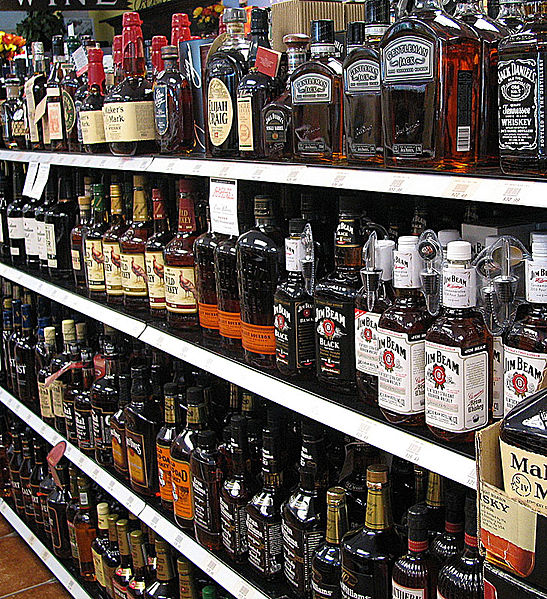99.9% of people’s answer to this question will be “Jack Daniels”.
99.9% of the bars I’ve been to will list either Jack Daniels or George Dickel under the “Bourbons” category.
These are the same people who believe that 9/11 was a Republican conspiracy, that Elvis is still alive and that Area 51 is a special casino built for aliens back in the 70’s.
These are the same people who will mix it with Coke or have it as a Long Island or Rusty Nail cocktails.
In one word: Fools
In two words: Scotch Lovers
Legally, under the NAFTA (North Atlantic Free Trade Agreement), Jack Daniels and George Dickel, which are Tennessee whiskeys are also defined as “Bourbon”. They just don’t identify themselves as bourbons.
According to the Federal Standards of Identity for Distilled Spirits, bourbon made for consumption within the United States must meet the following requirements:
A. Only whiskey made in the United States can be called bourbon.
B. Must contain at least 51% corn.
C. Must be aged in oak barrels.
D. Can’t contain more than 80% alcohol (160 proof).
E. Must be entered into the barrel for aging with no more than 62.5% alcohol (125% proof).
F. Must be bottled at 40% alcohol or more (80 proof).
G. Must be aged for AT-LEAST 2 years.
H. If aged for more, the word “straight” can be shown on the label.
I. A bourbon which has an age stated on the label must be labeled with the age of the youngest whiskey in the bottle.
Unlike tequilas and cognacs, which must be made in their own very specific regions (Jalisco and Champagne, respectively), bourbon can be made anywhere in the United States. 97% of the bourbons are made in Kentucky, where bourbon producing has a strong historical association. Another major reason for producing bourbon in Kentucky is the large amount of corn that grows there. Bourbon was also made and is still being made in other states like California, Kansas, Maryland, Pennsylvania, Virginia and more but the majority is in Kentucky around Bardstown.
No one really knows the exact way bourbon appeared for the first time. Some people will say that it was through a Baptist minister named Elijah Craig, some people will argue and say that it was James Crow and other people will say that it was Richard Hennessy (These are the same fools I’ve mentioned earlier…) . It was probably the British-Irish who started distilling whiskey in North America after the first wave of immigration from Europe, but first, they made beer that was often made from pumpkins because of a malt scarcity at the time. The Germans who immigrated from Europe to Maryland, Pennsylvania and Virginia were to first to grow and distill the rye whiskey, while the Southern colonies were more about bourbon, moonshine and other college poisons. When shipping the raw materials became risky and expensive, people simply opened their own little distillery in their back yard. Most of these obviously didn’t survive but the ones who did left some true gems for us whiskey collectors. In 1794 the government realized that taxing these distilleries might be worthwhile, so they sent some “IRS” people to collect the funds from the new distillers. The tax collectors were brutally attacked by the whiskey people time after time until George Washington led a 15,000 troops to show them who is the boss.
Here are some familiar definitions we see often on bourbons and pretend like we actually understand what they mean although some of us don’t:
Small Batch: Bourbon that was made from a batch of barrels that were mixed prior to bottling.
Single Barrel: A bourbon which was bottled from one barrel only. Bourbon is usually a mixture of several barrels, but in this case, the Master Distiller picked the finest barrel and bottled it individually.
Straight: Aged for at least four years.
Sour Mash: A previous mixture is added to a new one in order to create a “starter” for the new whiskey
Bonded: Can hardly be found today; bonded bourbons were kept in a government-supervised warehouses for at least four years. The distilleries wanted to avoid paying the taxes for the time the bourbon was aging so they let the government keep it for them. These are 100-proof bourbons with a green tax stamp on the top. Some people actually thought that it has a higher quality than regular bourbons. Today those people drink gin and tonic and play badminton.

